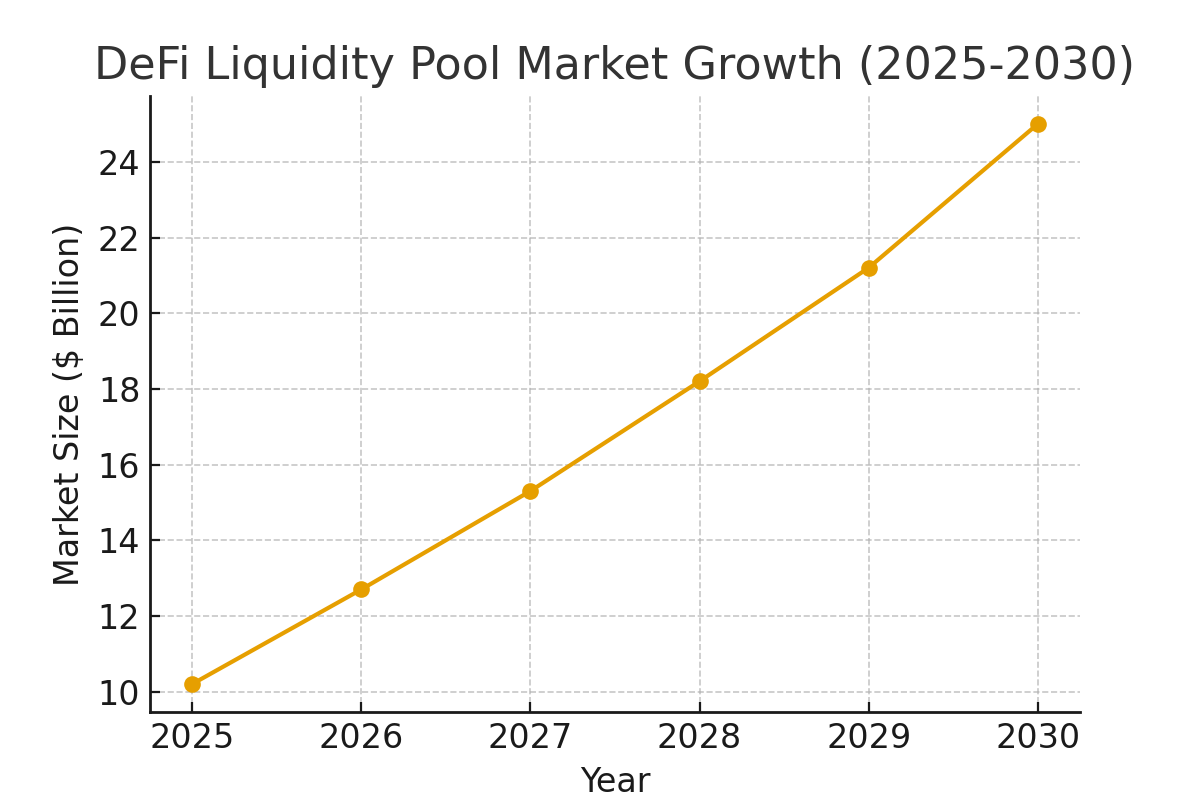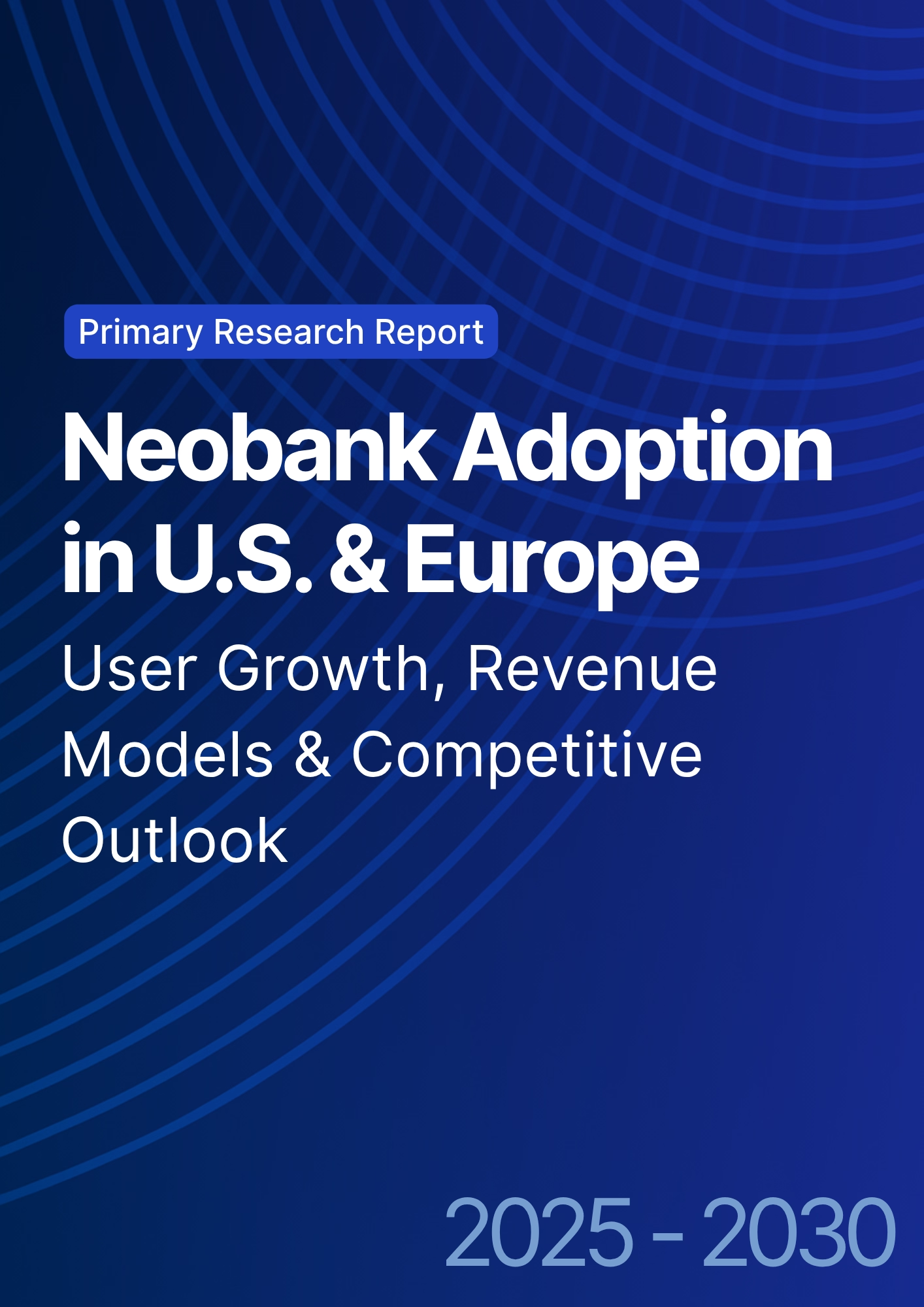

68 Circular Road, #02-01 049422, Singapore
Revenue Tower, Scbd, Jakarta 12190, Indonesia
4th Floor, Pinnacle Business Park, Andheri East, Mumbai, 400093
Cinnabar Hills, Embassy Golf Links Business Park, Bengaluru, Karnataka 560071
Connect With Us
Decentralized Finance (DeFi) Liquidity Pool Optimization: Yield Strategy Analysis & Protocol Security - Investment Analysis
Decentralized Finance (DeFi) has emerged as a game-changing technology in the financial industry, offering innovative solutions for liquidity pool optimization, yield strategies, and protocol security. DeFi platforms leverage blockchain technology to provide decentralized financial services, eliminating the need for traditional intermediaries like banks and brokers. By 2025, the DeFi market for liquidity pool optimization in North America is projected to reach $10.2 billion, growing at a CAGR of 25% from 2025 to 2030. This report analyzes the current trends in DeFi liquidity pools, examines the yield strategies used by DeFi protocols, and assesses the impact of security protocols on DeFi investment strategies in the USA and North America. The report also explores the risks and rewards associated with DeFi liquidity pools, focusing on protocol security, yield optimization, and the regulatory landscape affecting the DeFi ecosystem.

What's Covered?
Report Summary
Key Takeaways
- The DeFi liquidity pool market is expected to reach $10.2 billion by 2025, growing at a CAGR of 25% from 2025 to 2030, driven by increased demand for decentralized financial services.
- By 2025, 30% of financial institutions in North America will have adopted DeFi liquidity pools to optimize yield generation and diversify investment strategies.
- DeFi protocol security is expected to improve by 40% between 2025 and 2030, reducing the risks of hacks and security breaches that have plagued early DeFi platforms.
- Annual DeFi yield generation is projected to exceed $1.5 billion by 2025 as more investors flock to liquidity pools for optimized returns.
- The adoption of yield strategies in DeFi platforms is expected to rise to 50% of DeFi investors by 2025, as investors seek higher returns through liquidity pool optimization.
- Top DeFi liquidity pool providers are expected to capture 35% of the market share by 2030, driven by their ability to offer secure, scalable, and efficient solutions.
- Risk-adjusted returns for DeFi liquidity pools will improve by 15% from 2025 to 2030, as more advanced yield strategies and risk mitigation protocols are developed.
- As DeFi continues to mature, regulatory frameworks will play an increasingly significant role in ensuring the security and sustainability of liquidity pools and yield optimization strategies.
Key Metrics
Market Size & Share
The DeFi liquidity pool market is set to grow significantly, reaching $10.2 billion by 2025, with a CAGR of 25% from 2025 to 2030. This growth is being driven by an increasing number of institutional investors and individual participants seeking to generate higher yields and optimize their investments.
By 2025, 30% of financial institutions in North America will be participating in DeFi liquidity pools, contributing to the growing adoption of decentralized financial services.
Market Growth Projection (2025-2030):

Market Analysis
The DeFi market in North America is witnessing a rapid surge in liquidity pool adoption as investors look for decentralized alternatives to traditional financial systems. Yield strategies, such as staking and liquidity mining, are becoming increasingly popular among institutional investors who are seeking to optimize returns on their digital asset holdings. By 2025, 30% of financial institutions in North America will have integrated DeFi liquidity pools into their portfolio management strategies, reflecting growing confidence in the security and potential returns offered by decentralized platforms.
DeFi Liquidity Pool Adoption Rate in North America (2025-2030):

Trends and Insights
Several key trends are driving the adoption of DeFi liquidity pools in North America. The increasing popularity of yield farming and liquidity mining strategies is attracting institutional and retail investors to DeFi platforms. These strategies allow users to earn rewards for providing liquidity to decentralized platforms, often outperforming traditional financial products. Moreover, security improvements in DeFi protocols, driven by the development of better smart contract technologies and risk management tools, are enhancing investor confidence and reducing risks associated with liquidity pools.
Segment Analysis
The primary participants in DeFi liquidity pools include retail investors, institutional investors, and financial institutions. Retail investors are attracted to DeFi for its high yields and potential for passive income, while institutional investors are increasingly interested in DeFi liquidity pools as a way to diversify their portfolios and gain exposure to emerging digital asset classes. Banks and traditional financial institutions are beginning to explore DeFi liquidity pools as a means of accessing higher returns, with 30% of financial institutions in North America expected to participate by 2025.
Geography Analysis
In North America, the USA is leading the adoption of DeFi liquidity pools, driven by the increasing interest from institutional investors and financial services firms. Canada and Mexico are also experiencing growing adoption, although at a slower rate due to regulatory and infrastructure challenges. The adoption of DeFi liquidity pools in the USA is expected to accelerate, particularly in states with more favorable regulatory environments such as Wyoming and California, which are attracting fintech firms and DeFi startups.
DeFi Liquidity Pool Adoption Across Regions (2025):

Competitive Landscape
The competitive landscape for DeFi liquidity pools is rapidly evolving, with top providers such as Uniswap, SushiSwap, and Aave dominating the market. These platforms have pioneered liquidity pool optimization strategies that have attracted both retail and institutional investors. New players are entering the market, offering innovative liquidity pool designs and enhanced security features to differentiate themselves. As the DeFi space matures, competition is expected to intensify, with providers vying for market share through differentiated offerings, better yield strategies, and improved risk management protocols.
Report Details
Proceed To Buy
Want a More Customized Experience?
- Request a Customized Transcript: Submit your own questions or specify changes. We’ll conduct a new call with the industry expert, covering both the original and your additional questions. You’ll receive an updated report for a small fee over the standard price.
- Request a Direct Call with the Expert: If you prefer a live conversation, we can facilitate a call between you and the expert. After the call, you’ll get the full recording, a verbatim transcript, and continued platform access to query the content and more.


68 Circular Road, #02-01 049422, Singapore
Revenue Tower, Scbd, Jakarta 12190, Indonesia
4th Floor, Pinnacle Business Park, Andheri East, Mumbai, 400093
Cinnabar Hills, Embassy Golf Links Business Park, Bengaluru, Karnataka 560071
Request Custom Transcript
Related Transcripts
$ 1450


68 Circular Road, #02-01 049422, Singapore
Revenue Tower, Scbd, Jakarta 12190, Indonesia
4th Floor, Pinnacle Business Park, Andheri East, Mumbai, 400093
Cinnabar Hills, Embassy Golf Links Business Park, Bengaluru, Karnataka 560071













